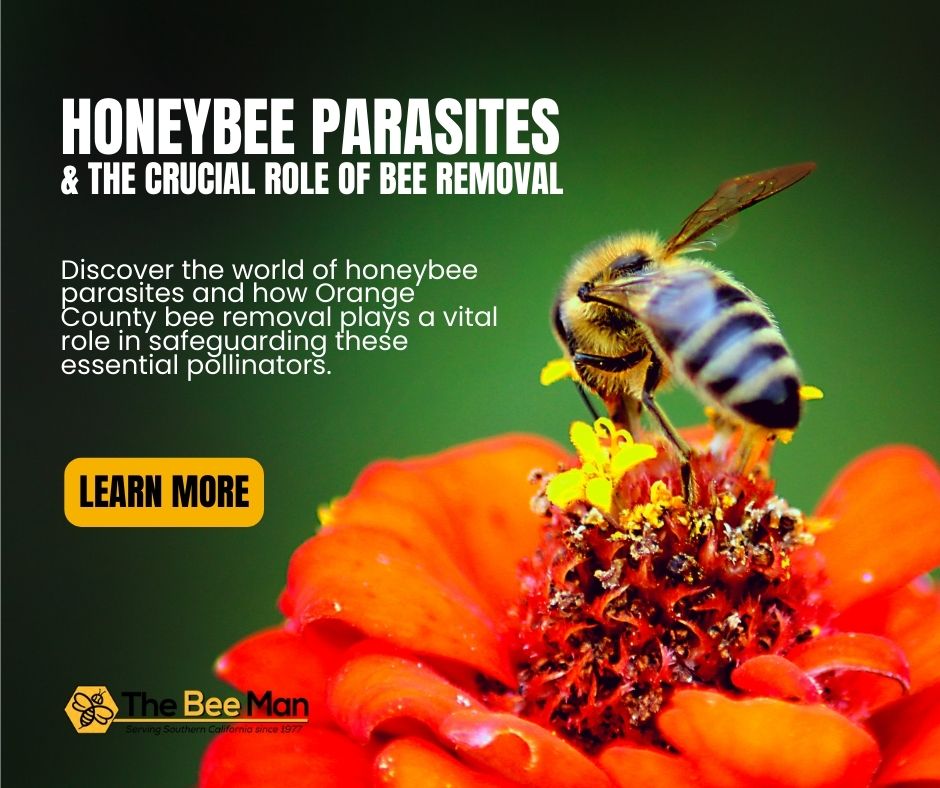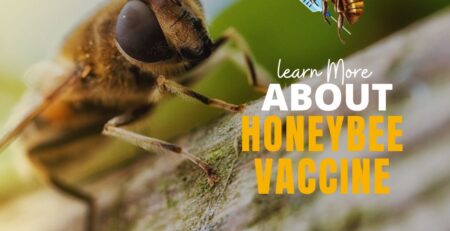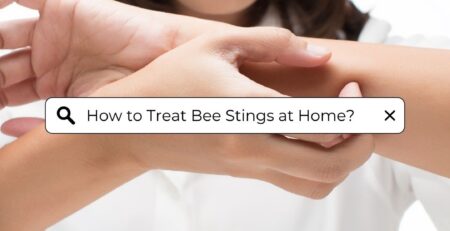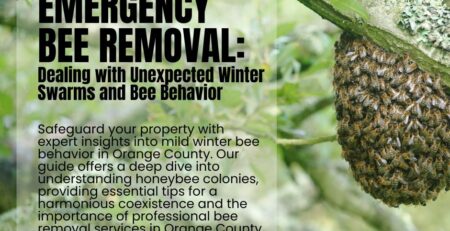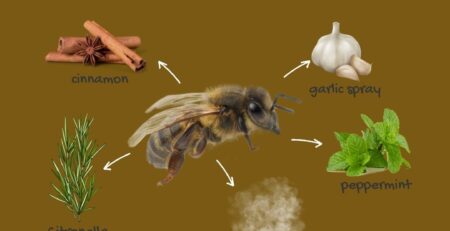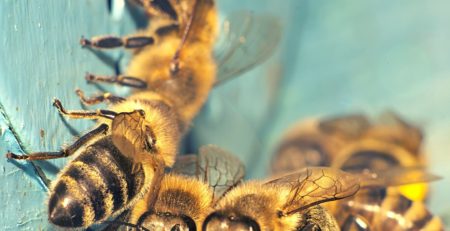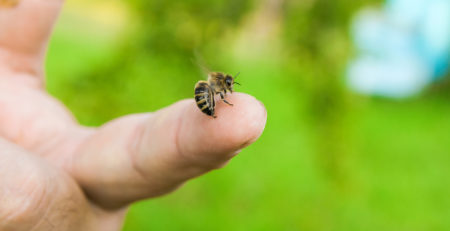Honeybee Parasites and the Crucial Role of Orange County Bee Removal
Honeybees are fascinating creatures that play a crucial role in pollination and maintaining ecological balance. However, they face numerous challenges, one of which is dealing with parasites. Honeybee parasites can wreak havoc on entire colonies, leading to devastating consequences for both bee populations and agricultural industries that rely on pollination services. In this blog, we will explore some of the most common honeybee parasites and shed light on the importance of hiring professional Orange County bee removal services when dealing with these delicate creatures.
Understanding Honeybee Parasites
Varroa Mites
Varroa mites (Varroa destructor) are one of the most destructive parasites that afflict honeybee colonies worldwide. These tiny reddish-brown arachnids attach themselves to adult bees and their brood, feeding on their hemolymph (the bee’s equivalent of blood). This weakens the bees, shortens their lifespans, and makes them more susceptible to other diseases. Varroa mites can quickly spread from one colony to another, leading to catastrophic losses in bee populations if not addressed promptly.
Nosema
Nosema is a microsporidian parasite that infects the digestive tract of honeybees. Nosema spores spread through contaminated food, and once inside a bee’s body, they disrupt nutrient absorption, ultimately leading to malnutrition and reduced life expectancy. Infected bees may exhibit weakened immune systems, shaking behavior, and a higher probability of prematurely abandoning the hive, which can lead to colony collapse.
Small Hive Beetle
The small hive beetle (Aethina tumida) is another troublesome parasite for honeybee colonies. Originating from Africa, this beetle has spread to various parts of the world. The adult beetles lay their eggs in beehives, and the larvae consume the stored pollen, honey, and wax, causing damage to the hive and its contents. Infestations can quickly escalate, causing hive abandonment or colony collapse.
The Importance of Professional Bee Removal Services
Preserving Bee Populations
Hiring professional bee removal Orange County services is critical for preserving honeybee populations. Bees are essential pollinators for numerous fruits, vegetables, and crops, contributing significantly to global food production. Without their pollination services, many crops would suffer, leading to food scarcity and economic losses. Professional beekeepers have the knowledge and experience to handle bee infestations carefully, ensuring the survival and relocation of the colony when possible.
Safe and Ethical Removal
Removing a honeybee colony is a delicate process that requires expertise and adherence to ethical standards. Professional bee removal services prioritize the safety of both humans and bees during the removal process. They use specialized equipment and techniques to extract the colony without causing harm, allowing the bees to continue their essential role in the environment.
Mitigating the Spread of Parasites
Inexperienced attempts to remove honeybee colonies can lead to unintended consequences, such as the spread of parasites to new locations. Varroa mites and other honeybee parasites can easily hitch a ride on beekeepers’ tools or bee swarms, inadvertently infesting other colonies. By hiring professionals to conduct bee removal in Irvine, CA, the risk of parasite transmission is minimized, protecting both managed and wild bee populations.
Further Exploration on the Roles of Honeybees
The Intricacies of a Beehive
Honeybee colonies are more than just a collection of bees. They are intricate societies where each bee plays a unique role. Worker bees, drones, and the queen all coexist in a harmonious rhythm. The queen lays eggs, ensuring the continuation of the hive. Worker bees collect nectar, make honey, and take care of the brood. Drones have the sole purpose of mating with the queen. This delicate balance within the hive makes them vulnerable to parasites, which can disrupt this balance and endanger the entire colony.
The Economic Impact of Honeybee Loss
Apart from the direct impact on food production, the loss of honeybee populations can also have ripple effects on the economy. For instance, according to a study, honeybees contribute over $14 billion to the U.S. economy through their pollination services. Without them, prices for certain foods could skyrocket, leading to potential economic instability.
Natural Solutions to Honeybee Parasites
There’s a growing interest in natural solutions to combat honeybee parasites. For instance, some beekeepers are experimenting with essential oils to deter mites. Others are focusing on breeding more resistant bee strains. These endeavors highlight the importance of research and innovation in safeguarding our bee populations.
Bee Education and Advocacy
Awareness and education play a significant role in protecting our honeybees. Supporting local beekeeping associations or attending workshops can provide insights into the fascinating world of bees. By understanding their behavior, needs, and challenges, individuals and communities can contribute more effectively to their protection. Moreover, advocating for sustainable farming practices, reduction in pesticide use, and supporting organic farming can also help reduce the threats faced by honeybees.
How Can You Help?
Every individual can play a role in supporting honeybee populations:
Plant bee-friendly gardens: Include plants like lavender, sunflowers, and marjoram to provide bees with ample nectar and pollen.
Reduce pesticide use: If you must use them, try to apply them in the evening when bees are less active.
Support local beekeepers: Buying local honey can support beekeepers, ensuring that they continue their essential work.
Educate others: Spread the word about the importance of bees and the threats they face.
Protecting our honeybees is not just about ensuring our food supply but also about preserving the natural balance of our environment. Every bee saved is a step towards a more sustainable and harmonious coexistence with nature. Remember, it’s not just about removing a problem but understanding and appreciating the delicate balance of our ecosystem. So, the next time you see a bee buzzing about, take a moment to appreciate its significance in our world.
The Intricacies of a Beehive
Honeybee colonies are truly marvels of nature, operating as highly organized and efficient societies. Within the confines of a beehive, a complex web of interactions takes place, with each individual bee fulfilling a specific role that contributes to the overall survival and success of the colony. Understanding these roles and dynamics is essential for comprehending the vulnerabilities that honeybees face when dealing with parasites.
Worker bees, the backbone of the hive, perform a multitude of tasks. They are responsible for foraging nectar from flowers, collecting pollen, producing honey, and tending to the needs of the queen and the brood. Worker bees even regulate the temperature of the hive by fanning their wings to circulate air. Their tireless efforts ensure that the hive has enough food stores to last through periods of scarcity.
The queen bee, a single fertile female in the colony, plays a pivotal role in maintaining the population. She lays eggs that give rise to the next generation of bees. The queen’s pheromones also serve to maintain harmony within the hive, keeping worker bees united in their purpose. Interestingly, a colony can replace its queen if she becomes less productive or dies, highlighting the adaptability of honeybee societies.
Drones, on the other hand, have a much more specific function. Their primary role is to mate with a new queen during her nuptial flight. Unlike worker bees, drones do not have stingers, pollen baskets, or specialized glands for producing beeswax. Their presence is essential for the genetic diversity of the colony, ensuring healthier and more resilient offspring.
All these roles intertwine seamlessly, creating a delicate balance that can be easily disrupted by honeybee parasites. When parasites infiltrate a hive, they undermine the well-being of individual bees, leading to weakened immune systems, shortened lifespans, and decreased reproductive success. This, in turn, affects the overall harmony of the colony and its ability to thrive.
The Economic Impact of Honeybee Loss
Beyond the immediate ecological consequences, the decline of honeybee populations can trigger a chain reaction that reverberates through the global economy. Honeybees are responsible for pollinating a substantial portion of the world’s crops, including fruits, vegetables, nuts, and oilseeds. This pollination service is estimated to be worth billions of dollars annually.
In the United States alone, honeybee pollination contributes significantly to the production of crops like almonds, apples, blueberries, and cucumbers. Without the diligent work of honeybees, these crops would suffer from reduced yields and poor fruit quality. As a result, consumers could experience higher prices and limited availability of their favorite foods. Moreover, the agricultural sector, which heavily relies on honeybee pollination, would be hit hard, leading to job losses and economic instability in rural communities.
In recent years, concerns about honeybee declines have spurred researchers, policymakers, and businesses to take action. Efforts to mitigate the impact of honeybee parasites and other stressors include promoting sustainable agricultural practices, reducing pesticide use, and supporting initiatives that focus on honeybee health and conservation. The economic implications of honeybee loss underscore the urgency of finding effective solutions to protect these vital pollinators.
Natural Solutions to Honeybee Parasites
As the challenges posed by honeybee parasites become more apparent, beekeepers and researchers are exploring innovative and natural approaches to combat these threats. One such approach involves the use of essential oils, which have shown promise in deterring mites and other parasites. Substances like thymol and menthol, derived from plants like thyme and mint, respectively, exhibit pesticidal properties that can be harnessed to create more sustainable beekeeping practices.
Additionally, some beekeepers are focusing on breeding honeybee strains with increased resistance to parasites. Through selective breeding, beekeepers aim to develop colonies that can better withstand the onslaught of mites, Nosema, and other pathogens. This strategy aligns with the principles of sustainable agriculture, emphasizing the importance of resilience and adaptability in the face of changing environmental conditions.
These natural solutions not only reduce the reliance on chemical interventions but also contribute to the long-term health and viability of honeybee populations. By prioritizing the development of stronger, more resistant bee strains and incorporating sustainable practices, beekeepers are taking proactive steps to address the challenges posed by parasites.
Bee Education and Advocacy
Education and awareness are crucial components of any successful conservation effort. This holds true for honeybees as well. By raising awareness about the importance of honeybees and the threats they face, individuals and communities can become active participants in their protection.
Beekeeping associations and organizations offer valuable resources for bee enthusiasts and the general public alike. Local beekeeping clubs often host workshops, seminars, and events that provide insights into the world of bees. These gatherings offer opportunities to learn about bee behavior, hive management, and the latest developments in beekeeping practices.
Engaging with these organizations also fosters a sense of community and shared responsibility for honeybee conservation. As more people become educated about the challenges honeybees encounter, they are better equipped to advocate for policies and practices that prioritize bee health and well-being.
Advocacy efforts extend beyond the realm of beekeeping enthusiasts. Individuals can support honeybees by making informed consumer choices. By purchasing local honey and supporting organic and sustainable farming practices, consumers contribute to the demand for pollinator-friendly agriculture. This demand, in turn, incentivizes farmers to adopt methods that reduce pesticide use and create habitats conducive to pollinator survival.
Conclusion
In a world where intricate ecosystems are delicately balanced, honeybees serve as an integral thread that connects plants, animals, and humans. The challenges posed by honeybee parasites highlight the interconnectedness of all life forms and underscore the urgency of safeguarding these pollinators. The knowledge that honeybees contribute significantly to food security, economic stability, and environmental health compels us to take action.
Hiring a company performing bee removal Orange County is not only a responsible step in addressing honeybee infestations but also a testament to our commitment to the preservation of these fascinating creatures. Their role in pollination, ecosystem balance, and agricultural productivity cannot be overstated. By working together, from beekeepers and researchers to consumers and policymakers, we can ensure that honeybees continue to thrive and contribute to a more sustainable and resilient world. So, let us embrace our role as stewards of nature, championing the cause of honeybee conservation and celebrating the remarkable contributions of these small but mighty insects.
Yet, the journey towards honeybee conservation is far from over. It requires sustained dedication, innovation, and collaboration on multiple fronts. Research into understanding honeybee behaviors, parasite interactions, and the development of effective solutions remains pivotal. Governments can play a significant role by implementing policies that promote pollinator-friendly habitats and regulate the use of pesticides that harm bees.
Education and awareness campaigns are equally essential components of the conservation puzzle. Schools, communities, and media outlets can play their part in spreading knowledge about the vital role honeybees play in our lives and ecosystems. By instilling a sense of responsibility and awe for these creatures, we can nurture a generation of environmentally conscious individuals who are committed to preserving the delicate balance of nature.
Local and global initiatives that focus on bee-friendly practices are gaining momentum. Urban gardens, rooftop apiaries, and pollinator-friendly landscapes are sprouting in cities and rural areas alike. By providing honeybees with suitable habitats and abundant forage options, we create havens where they can thrive and contribute to pollination networks that span continents.
In the grand tapestry of life, every bee, every flower, and every interaction is woven together in intricate patterns of interdependence. The preservation of honeybee populations symbolizes our commitment to sustaining these patterns and protecting the beauty and diversity of our world. As we celebrate the incredible journey of honeybees, from hive to flower and beyond, let us remember that our actions today determine the legacy we leave for future generations.
So, the next time you enjoy a delicious meal or gaze upon a vibrant field of wildflowers, take a moment to thank the tireless work of honeybees. Let their buzzing presence serve as a reminder of our shared responsibility to cherish and protect the delicate balance of our planet. Just as the wings of a honeybee ripple through the air, our efforts to conserve these remarkable creatures can send waves of positive change that reverberate through ecosystems and touch the lives of all living beings.

